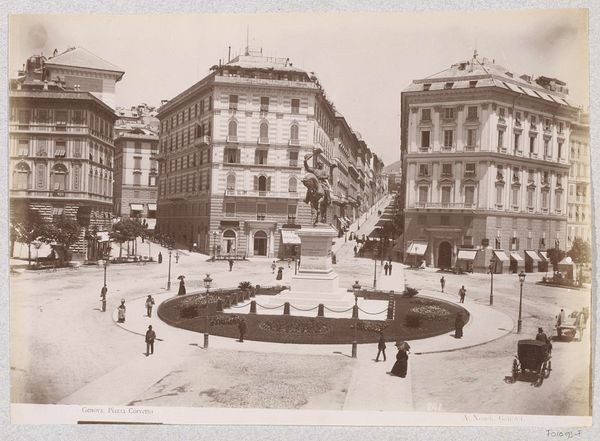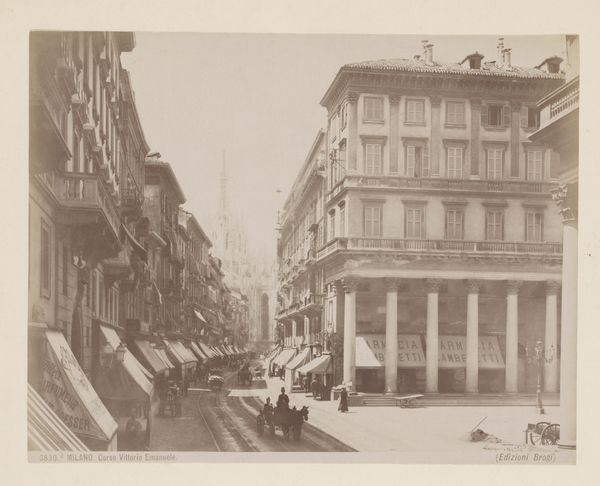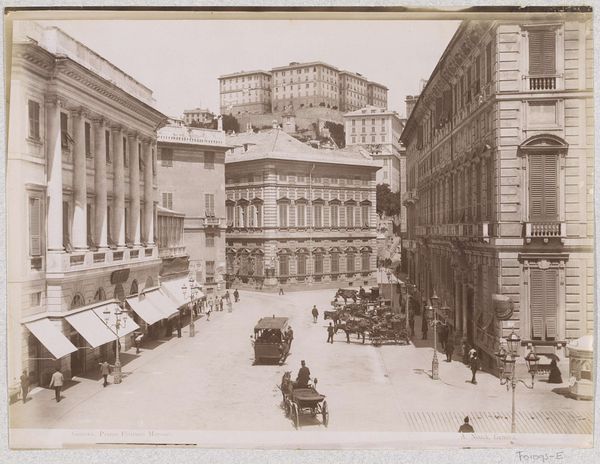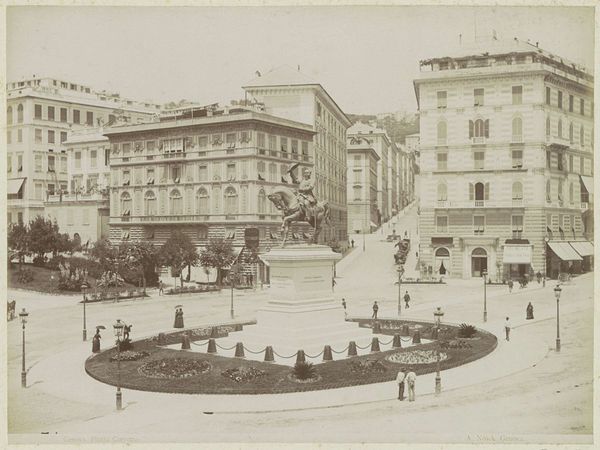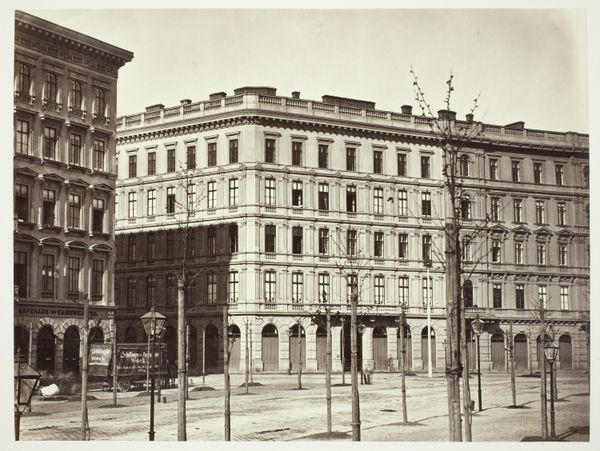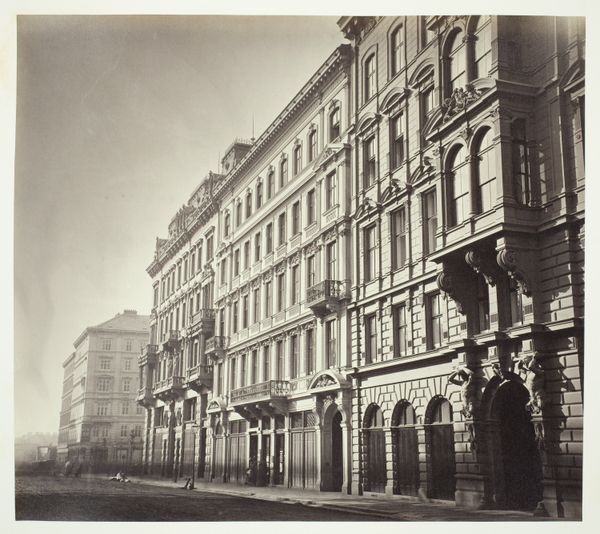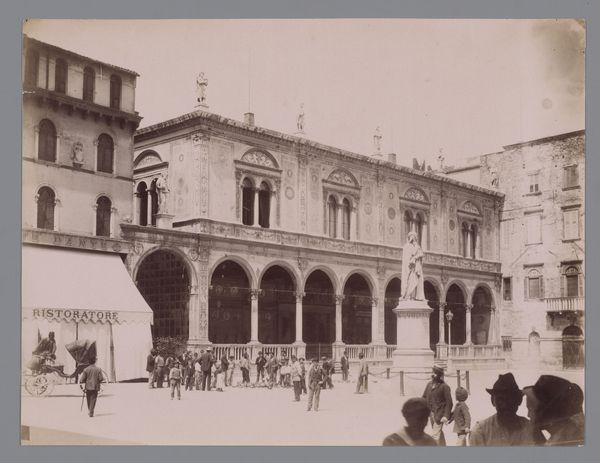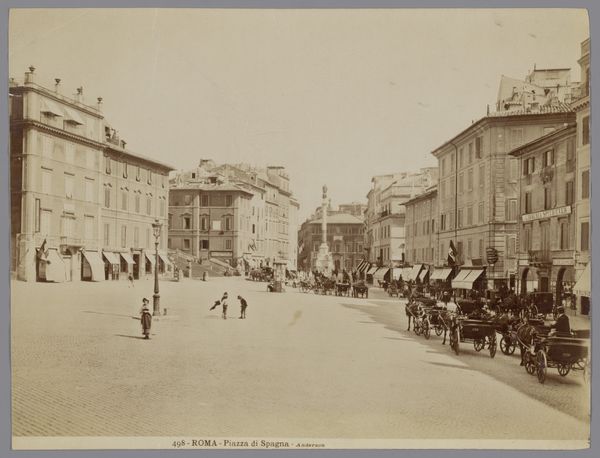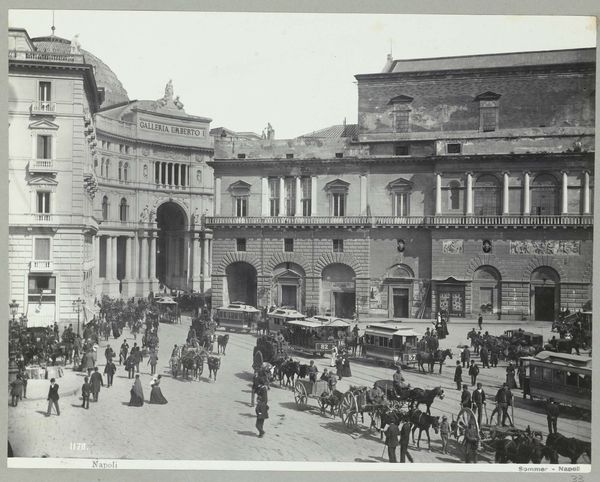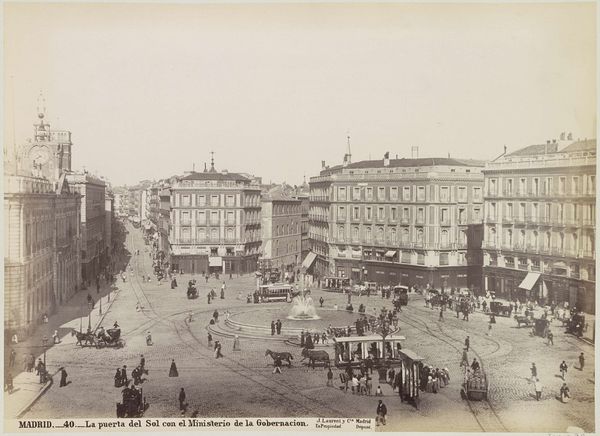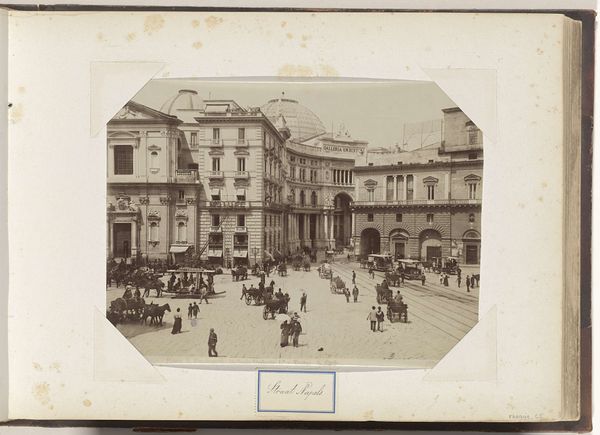
photography
#
photography
#
19th century
#
cityscape
#
italian-renaissance
#
street
Dimensions: height 194 mm, width 248 mm
Copyright: Rijks Museum: Open Domain
Curator: Ah, another gem from our collection. This photograph, titled "Piazza del Duomo en Via Carlo Alberto te Milaan," was captured by Fratelli Alinari before 1894. Look closely at the sepia tones—it's like stepping back in time. Editor: My first thought is density—both in the photographic rendering and the subject itself. A heavy stillness in what I imagine was a bustling public space. I'm fascinated by the production: How were such high-resolution negatives achieved in those days? Curator: Precisely! This photograph wasn't just about capturing a cityscape; it was about mastering the craft. Alinari’s workshop would have been a hotbed of experimentation, playing with exposure times, lens technology, and of course, the printing process. The albumen print gives it that almost ethereal, smooth finish. Editor: Yes, you can almost smell the chemicals, and feel the labour! It makes you think about the conditions of producing art: consider the access to photographic materials for some and the almost unimaginable difficulties of obtaining them for others, during the same period. Even the apparent emptiness, isn't that partly determined by long exposure times? Stillness imposed. Curator: Absolutely. These early photographs were commodities too—bought, sold, and collected. Think of them as early postcards. Imagine the lives of the anonymous figures we see going about their daily business in the piazza! Did they ever imagine being viewed over a century later in this way? It is haunting, really. Editor: And what kind of market demand drove Alinari's practice? Tourism? Documentation? We have to consider how these images operated within the circuits of exchange and value. Maybe Milan, even then, had a thirst to be seen, validated... Curator: A city revealing itself. Perhaps this isn’t just a photograph, but a mirror held up to Milan, reflecting not just its physical grandeur, but the very aspirations of its inhabitants. Thank you, Alinari, for this window into a bygone world, fraught with the labor, beauty and potential for change. Editor: And for revealing photography not merely as an objective recorder, but as a complex site of labor, ideology, and material processes.
Comments
No comments
Be the first to comment and join the conversation on the ultimate creative platform.
